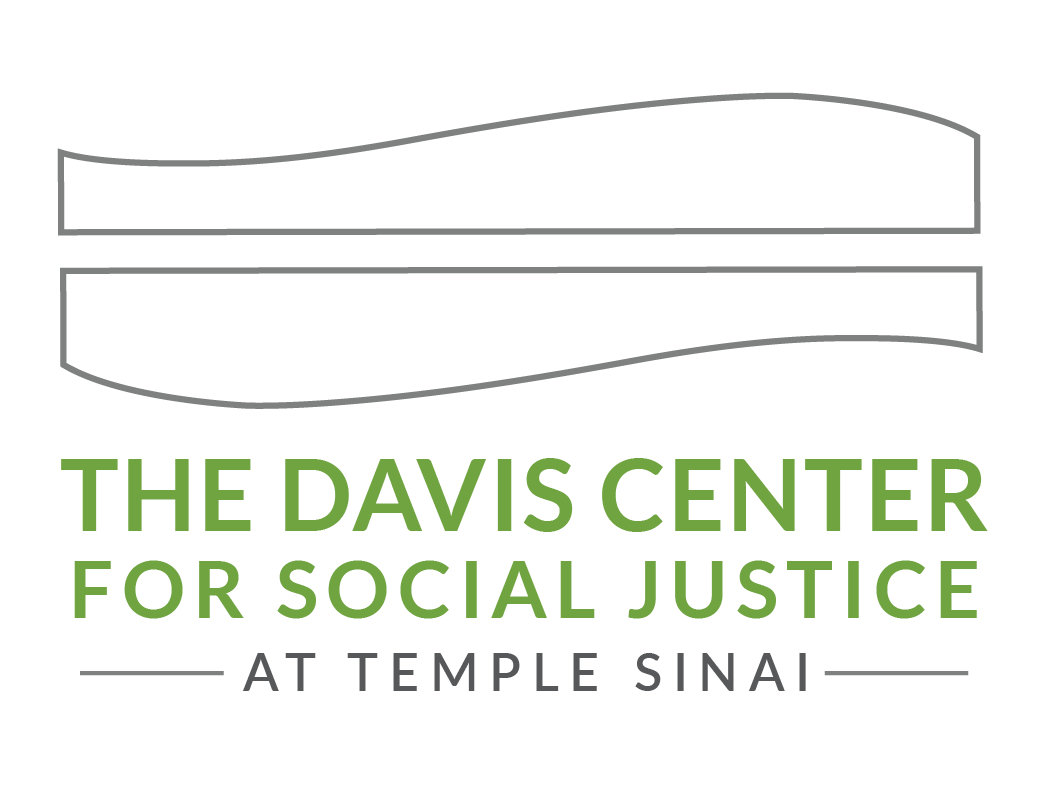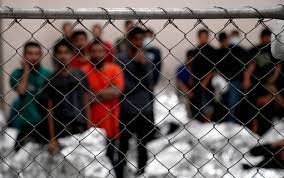by Cam Crockett
In February 2018, Rabbi Roos, his wife Elizabeth, and 9 other congregants traveled to Lumpkin, Georgia to visit the Stewart Detention Center. Our mission was to witness the conditions at Stewart, visit detainees, and then share what we learned with the temple community.
Stewart is a private medium security prison owned by Core Civic, a publicly-held for-profit corporation. It is in the middle of nowhere (our hotel was 25 minutes away in Eufaula, Alabama). The prison facility is intimidating and looks more like a maximum-security prison – brick, with no windows, surrounded by barbed-wire. It has a capacity for 1752 detainees. At the time of our visit, there were over 1500 male detainees living in dormitories of 60 each. There was an open floor plan of beds with showers and toilets at the end behind a curtain. The temperatures in the room were often too cold or too hot and the men had no ability to control the temperatures, leading to respiratory conditions that often went untreated. The men were allowed outside for an hour a day for exercise.
It is important to stress that the detainees were not criminals despite being housed and treated as such. Many of the detainees we visited were waiting for their asylum cases to be heard. One of the men I visited had traveled from Honduras by foot; he was picked up at the border and sent to Stewart, even though his only family was in Texas. Being sent so far from where they entered the US created even more isolation for the men. Stewart’s isolated geographic location made it difficult, if not impossible, for families or relatives to visit their loved ones.
On our first morning at Stewart, we met the founders of El Refugio (The Refuge), a ministry that provides hospitality to immigrants at Stewart and their loved ones, support for detainees, and bus tickets and other necessities to detainees upon their release. El Refugio also hosted groups like ours who came to visit. Their center provided an ongoing human presence at Stewart, which was invaluable in helping the detainees communicate with the outside world. Each of us were assigned 2 detainees to visit.
Once registered, we experienced a long wait to actually see the person we had come to visit. There was no bathroom in the waiting area, and the staff were very unwilling to allow anyone to enter the secured area to use the facilities. This went on for hours. I felt such pain for the families, many with small children dressed up as if they were going to church, who had driven long distances and waited endlessly to see a father, brother, uncle, or friend. When finally called in for our visit, we went through security devices and body searches, leading to a room with 5 visitor stations, each with a plexiglass window separating the visitor from the detainee. One of the most wrenching things for me that day was seeing small children climbing the walls around the plexiglass window trying to get closer to their father and finding themselves unable to touch him. The attorney we met at the Southern Poverty Law Center in Atlanta told us that even when representing a detainee, there were few opportunities to shake the person’s hand or have any real human contact, a form of mental abuse which created unnecessary isolation and despair.
My first detainee was from Mexico and spoke English. We talked about his daughter Ashley who was 4 and lived with his family in North Carolina. He was lucky because his family had hired an attorney to help him. (Statistics show that your chances of successfully obtaining asylum increase tenfold if you have counsel.) I remained in touch with him after our visit, sending him drawing books and supplies and even one of my watercolors which he framed when he got out. When he was released, El Refugio picked him up at Stewart and provided him with clothing and a bus ticket to get to his family in North Carolina.
My other visit was with a 19 year-old man from Honduras who spoke only Spanish. My intermediate Spanish proved adequate to make a good connection. He told me he was gay and was terrified of facing gang violence and homophobia if he was sent back to Honduras. He was clearly suffering from feeling unsafe and isolated, and it was breaking him. I later wrote to him and sent him cards and books. My understanding is that he was, in fact, later deported to Honduras; that was heartbreaking.
After our visit, I was left with feelings of anger, rage and sadness. I wanted to get rid of these inhuman places and policies. I wanted to abolish for-profit prisons. I wanted to assist and welcome immigrants in any ways that I could.
Since the trip over 5 years ago, I have been involved in immigration issues in Maryland, helping to pass legislation allowing those in fear of detention or deportation to appoint a standby guardian for their minor children. I created a non-profit organization, Standby Guardianship Project, to educate immigrants about this new law and assist them in appointing guardians.

